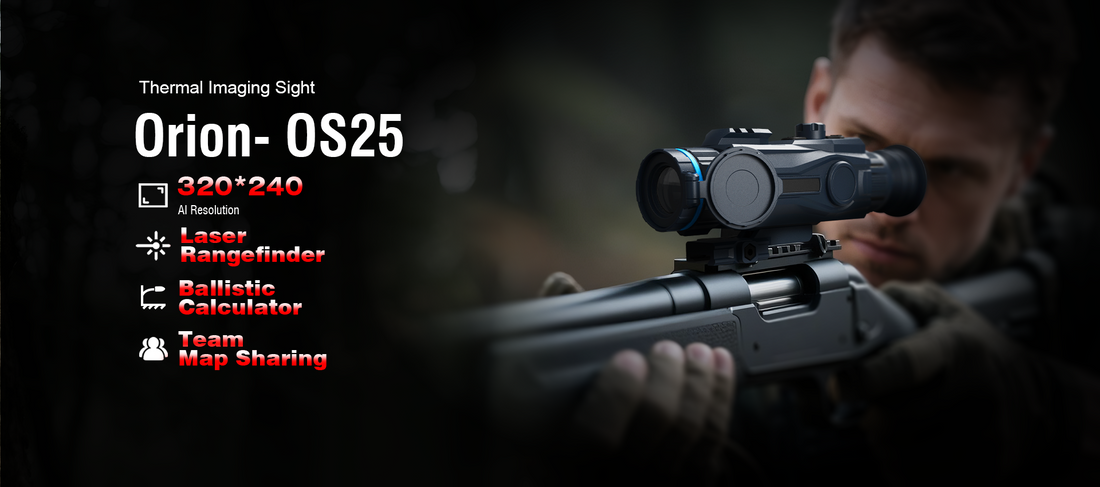
The advantages and disadvantages of optical sights and thermal imaging sights
Share
Optical Sights
Advantages
1:High Resolution & Clarity
Provide sharp, detailed images with true color representation, ideal for identifying targets precisely in well-lit conditions.
Examples: Hunting or competitive shooting where target differentiation is critical.
2:Lightweight & Compact
Generally smaller and lighter than thermal scopes, making them more portable and suitable for long-term use.
3:Cost-Effective
Typically less expensive than thermal imaging devices, making them accessible for recreational users.
4:No Battery Dependence (for basic models)
Some basic optical sights (e.g., iron sights or simple scopes) don’t require power, ensuring reliability in low-tech scenarios.
5:Wide Field of View
Often offer a broader perspective, helpful for tracking moving targets or scanning environments.
Disadvantages
1:Limited Performance in Low Light
Struggle in darkness, heavy fog, or smoke, as they rely on ambient light to function.
Vulnerability to Glare
Can be affected by sunlight or bright reflections, causing temporary blindness or reduced visibility.
2:No Thermal Detection
Cannot detect heat signatures, making it difficult to locate targets hidden by obstacles or in camouflage.
Thermal Imaging Sights
Advantages
1:All-Weather & Night Vision
Function effectively in complete darkness, fog, smoke, or heavy rain by detecting infrared (IR) heat signatures.
Ideal for military operations, search and rescue, or hunting in low-light conditions.
2:Thermal Target Detection
Can identify warm-blooded targets behind vegetation, walls, or camouflage, providing a tactical advantage.
3:Reduced Dependence on Ambient Light
Operate independently of sunlight or artificial light, ensuring consistent performance in any lighting.
4:Less Susceptible to Glare
Unaffected by bright light sources, as they detect heat rather than visible light.
Disadvantages
1:Lower Visual Resolution
Images appear as thermal gradients (e.g., color or black-and-white heat maps), lacking fine details compared to optical sights.
Difficult to identify targets based on visual features (e.g., clothing or equipment).
2:Heavy & Bulky
Typically larger and heavier due to built-in thermal sensors and processing units, affecting mobility.
3:High Cost
Significantly more expensive than optical sights, often restricting use to professional or military applications.
4:Battery Dependence
Require continuous power to operate, limiting usage time and adding weight (e.g., from extra batteries).
5:Limited Range (for lower-end models)
Lower-cost thermal scopes may have reduced detection ranges compared to high-end optical scopes. Summary: Optical sights excel in clear, well-lit environments where detail matters, while thermal scopes dominate in low-light or obscured conditions by leveraging heat detection. The choice depends on intended use, budget, and environmental requirements.
Summary: Optical sights excel in clear, well-lit environments where detail matters, while thermal scopes dominate in low-light or obscured conditions by leveraging heat detection. The choice depends on intended use, budget, and environmental requirements.
